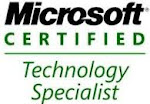How can I’ll be SharePoint farm Administrator? By Adding Farm
Admin group from SharePoint Central Admin site as shown the below I’ll become
Farm Administrator?
But as we have expected by completing all the steps, these
will not grant Farm Admin privileges on the server. These steps will add user
to farm admin group in SharePoint and WSS_ADMIN_WPG group in SharePoint farm.
By updating user to this farm admin, users get access to web site and access to
SharePoint resources as logs and web services.
If user not added in SharePoint local Admin group, user is
not fully-fledged SharePoint farm administrator. When user runs SharePoint
management he will see "The local farm is not accessible. Cmdlets with feature dependency
ID is not registered."
To execute PowerShell commands, users need
SharePoint_Shell_Access in SQL server SharePoint configuration database and
other databases where we need to manage the data.
Therefore, to make a user as SharePoint farm admin, he need
to have following permissions,
·
Local Administrator security group for each
server in the farm
·
Farm Administration SharePoint Group
·
SQL Server SharePoint_Shell_Access database
role for the SharePoint configuration database and all content databases.


.jpg)
.jpg)








